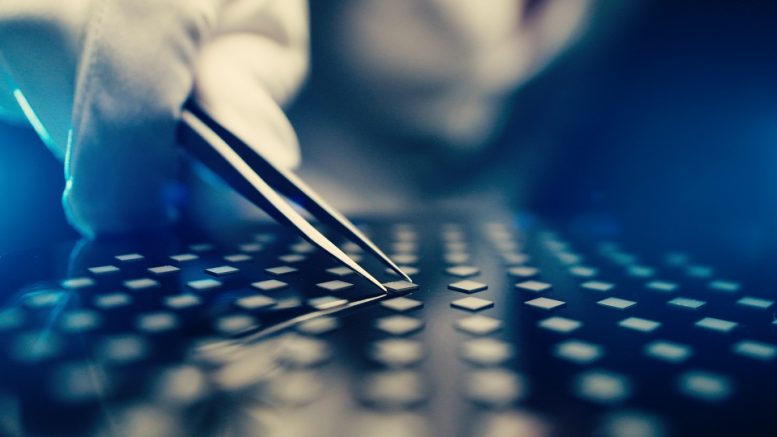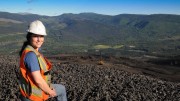In a milestone moment for traditional diamond miners, De Beers Group has launched a new company named “Lightbox Jewelry” that will exclusively produce and sell laboratory-grown diamond jewellery, using technology developed by De Beers subsidiary Element Six, and hitherto used over the past five decades for producing synthetic industrial diamonds.
Although the dollar sums of the venture are low compared to De Beers’ traditional mining and retail activities, it is nevertheless a gamble for the world’s leading diamond miner, and on its surface a shrewd move to get out in front of the lab-grown jewellery market that has steadily eaten away at the edges of traditional diamond revenues.
De Beers will spend US$94 million over the next four years to build the Lightbox brand and construct a new Element Six production facility near Portland, Ore., adding to Element Six’s existing facilities in the United Kingdom. Once fully operational, the Portland plant could produce upwards of 500,000 rough carats of lab-grown diamonds per year.
(By comparison, De Beers is producing 33 million carats of natural diamonds per year from world-class mines in Botswana, Canada, Namibia and South Africa, and plans to invest another US$3 billion in its natural diamond business.)
Beginning in September, Lightbox will start selling lab-grown diamonds to customers only in the U.S. via a new, stand-alone Lightbox retail website, with a selection of pink, blue and white synthetics that max out at 1 carat selling for only US$800 as part of finished jewellery — undercutting current lab-grown competitors by as much as 75%.
These diamonds will bear a microscopic, etched Lightbox logo and will not be sold through De Beers Jewellery or Forevermark, nor will they be referred to by De Beers or Lightbox as “precious” stones.
Since the emergence of the “blood diamond” issue in the late 1990s, one of the chief selling points of competing lab-grown diamond producers — such as California-based Diamond Factory, which has seen financial backing by Leonardo DiCaprio, star of the Hollywood movie Blood Diamond — has been the “ethical mining” pitch that such diamonds are not mined in a manner that exploits workers or fuels wars.
De Beers’ genius in its approach to marketing Lightbox diamonds is that it will undoubtedly ignore the “ethical diamond” pitch altogether.
Instead, it will reframe lab-grown diamonds as the low-cost, “fun” diamonds suited for lighthearted or whimsical purchases, and leaving the serious business of engagement rings and other emotionally weighty jewellery purchases to higher-margin natural diamonds and the existing De Beers retail infrastructure.
Indeed, we caught a glimpse of the new marketing direction in the official announcement of Lightbox’s launch, with De Beers Group CEO Bruce Cleaver stating that Lightbox will “transform the lab-grown diamond sector by offering consumers a lab-grown product they have told us they want, but aren’t getting: affordable fashion jewellery that may not be forever, but is perfect for right now. Our extensive research tells us this is how consumers regard lab-grown diamonds — as a fun, pretty product that shouldn’t cost that much — so we see an opportunity here that’s been missed by lab-grown diamond producers.”

Promotional material for Lightbox Jewelry’s new line of synthetic diamonds. Credit: Lightbox Jewelry.
Another aspect to the timing of Lightbox’s launch in relation to the 130-year history of De Beers is the recent development of portable technology created by De Beers to quickly and cheaply identify and separate synthetics from higher-value, natural stones and dissuade any fraudulent or accidental mixing of the two.
To this end, De Beers established the International Institute of Diamond Grading & Research (IIDGR) in 2008 to provide a premium grading service and proprietary equipment to the diamond industry. The IIDGR’s current suite of instruments includes DiamondSure, DiamondSure Mount, DiamondView, DiamondPlus and the Automated Melee Screening device launched in 2014, which IIDGR says “together remain the most robust and reliable in the industry.”
In September 2016, a new instrument named PhosView was launched — a compact, self-contained screening device designed to analyze polished stones and determine if they contain potential synthetics, simulants or treated diamonds.




Be the first to comment on "Editorial: De Beers enters synthetic diamond jewellery market"